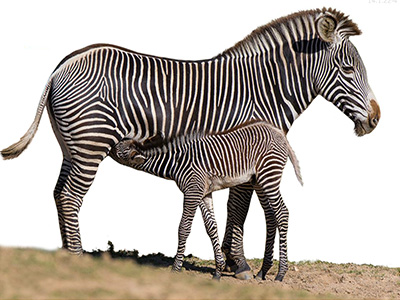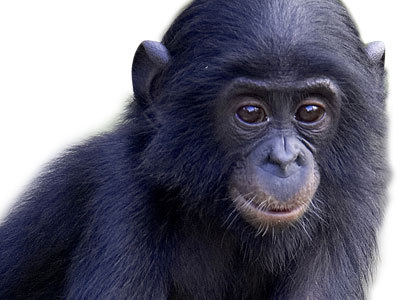 |
Bony Fishes Collection |
10.00 |
Whether they are cruising the vast open sea, blending in with the bottom, lurking in the kelp beds, hiding in the coral, or fighting their way upstream, fish live in a world that’s vastly different than ours. In the Bony Fishes Collection, we’ll dive into this world. You’ll explore:
• Bony Fishes Module 1: Physical Characteristics
• Bony Fishes Module 2: Distribution and Habitat
• Bony Fishes Module 3: Ecology and Behavior
• Bony Fishes Module 4: Reproduction and Development
• Bony Fishes Module 5: Conservation.
|
 |
Introducing Animals: Reptiles |
4.50 |
In this course collection, interpreters, guides, docents, and wildlife care specialists can explore the fascinating life of reptiles in this collection of five modules. The individual modules allow for a more focused approach to the material, as each takes a narrow scope. Each module includes self-assessment opportunities and its own mastery test. Reptiles 1 explores the physical characteristics of the reptiles: snakes, lizards, turtles and tortoises, crocodilians, and tuataras. Reptiles 2 covers reptile distribution and habitats. In Reptiles 3, learners investigate what—and how—reptiles eat, as well as which animals prey on various reptiles, and how reptiles avoid being eaten. This module also covers thermoregulation, locomotion, behavior, and communication. Reptiles 4 explores the fascinating world of reptile reproduction. The final course in the series, Reptiles 5 investigates the conservation status of reptiles, threats to reptiles, and how conservationists are helping. The module concludes with a look at some examples of how we can all participate in reptile conservation. |
 |
Mammals |
4.50 |
This series of five modules provides you with a greater understanding of the wide range of the types of mammals and some of their remarkable adaptations, enabling you to be a better interpreter, animal care professional, volunteer, or simply a better informed individual. Information includes an overview of physical characteristics, habitat, behavior, reproduction, and the conservation efforts dedicated to protecting this taxonomic group. Individual modules allow for a more focused approach to the material, as each takes a narrow scope. Each module includes self-assessment opportunities and its own mastery test. |
 |
Introducing Monotremes |
3.00 |
Are monotremes a bit of mystery to you? Get to know the echidnas and the platypus, as Monotremes 1 explores the physical characteristics, distribution, and habitats of echidnas and platypuses. In Monotremes 2, learners investigate what—and how—monotremes eat, as well as which animals prey on them, and how they avoid being eaten. This module also covers thermoregulation, locomotion, behavior, and social structure. The third and final course in the series, Monotremes 3, explores the fascinating world of monotreme reproduction and investigates the conservation status of monotremes, threats to platypus and echidna species, and how conservationists are helping. The module concludes with a look at some examples of how we can all participate in conservation. Remarkable images show platypuses and echidnas in ways you’ve never seen before, and video provides insights into their behavior. Interactivity sprinkled throughout the modules engages participants in the learning process, and questions at the end of each section ensure that they have mastered fundamental concepts before they move on. |
 |
Great Apes |
3.00 |
This collection of 3 courses explores the natural history and conservation of the great apes and covers a bit about primates and how the apes fit into this larger group of animals. |
 |
Plant Conservation |
2.50 |
The goal of this course is to lead the fight against extinction by taking a leadership role and collaborating with others to save species from extinction using science-based techniques and fostering collaboration and cooperation. |
 |
Ending Extinction: The Basics - Module 2 |
2.50 |
The goal of this course is to lead the fight against extinction by taking a leadership role and collaborating with others to save species from extinction using science-based techniques and fostering collaboration and cooperation. |
 |
Ending Extinction: The Basics - Module 1 |
2.50 |
The goal of this course is to lead the fight against extinction by taking a leadership role and collaborating with others to save species from extinction using science-based techniques and fostering collaboration and cooperation. |
 |
Interpretation Basics: Module III Storytelling |
2.50 |
If you've successfully completed Interpretation Basics: Modules I and II, you can further develop your interpretive skills by completing the third module in the series: Interpretation Basics III: Storytelling. A well-told story is the most powerful way to connect visitors to your organization's mission and inspire conservation action. The skills presented in this course will help you select, develop, and deliver message-driven stories that are compelling, enjoyable, meaningful, and memorable. |
 |
Human Relations Skill Development (Collection) |
2.00 |
Being able to communicate effectively is an essential human relations skill for school-age care professionals. To be a good communicator, school-age professionals need to understand the components of communication and how the communication process works. They need to identify barriers to clear communication and develop strategies for minimizing or eliminating barriers to communication. School-age care professionals also need to work cooperatively with other team members to solve problems and conflicts. This requires an understanding of how teams work and the characteristics of effective teams. Assessing the current status of personal human relations skills helps each professional identify priorities for making improvements to these skills. |











